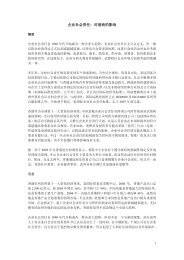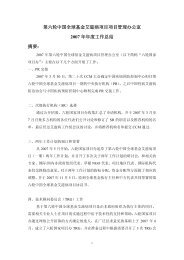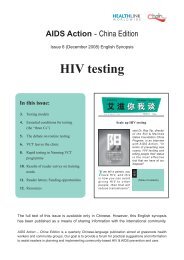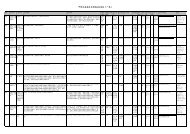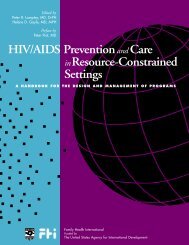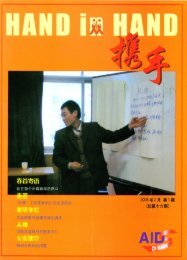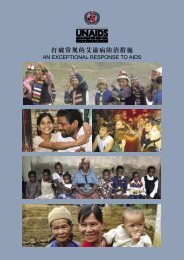The Training of Trainers Manual - UNFPA
The Training of Trainers Manual - UNFPA
The Training of Trainers Manual - UNFPA
You also want an ePaper? Increase the reach of your titles
YUMPU automatically turns print PDFs into web optimized ePapers that Google loves.
<strong>The</strong> manual is composed <strong>of</strong> four main sections:<br />
■ Section 1. From <strong>The</strong>ory to Practice in Peer Education reviews the definition <strong>of</strong><br />
peer education and its rationale and value in the context <strong>of</strong> different behaviour<br />
change theories and models.<br />
■ Section 2. Guidelines for <strong>Training</strong> <strong>of</strong> <strong>Trainers</strong>: A Curriculum provides the outline<br />
<strong>of</strong> a suggested six-day training <strong>of</strong> trainers (TOT) workshop. For each <strong>of</strong> the<br />
training topics, the curriculum provides appropriate training exercises and<br />
notes. <strong>The</strong> exercises are described in detail so that they can be reproduced<br />
easily in future trainings.<br />
■ Section 3. A Sample Peer Education Session on HIV/AIDS presents an example <strong>of</strong><br />
a peer education activity for use in the field. It describes a three- to four-hour<br />
HIV/AIDS education session that can be presented to a group <strong>of</strong> adolescents.<br />
■ Section 4. Participant Handouts includes 20 handouts that are used in the<br />
six-day training.<br />
Several annexes are included as well. A catalogue <strong>of</strong> selected resources contains<br />
guidelines on peer education, research resources, training manuals, resource<br />
guides, peer education journals, and a list <strong>of</strong> useful websites. <strong>The</strong> annexes also<br />
include samples <strong>of</strong> additional training exercises.<br />
This second edition <strong>of</strong> the <strong>Training</strong> <strong>of</strong> <strong>Trainers</strong> <strong>Manual</strong> is part <strong>of</strong> an expanded<br />
Youth Peer Education Toolkit that includes:<br />
■ Standards for Peer Education Programmes<br />
■ <strong>The</strong>atre-Based Techniques for Youth Peer Education: A <strong>Training</strong> <strong>Manual</strong><br />
■ Performance Improvement: A Guide for Managers<br />
■ Assessment Tool for Youth Peer Education Programmes<br />
Who should use this manual<br />
This manual can be used by anyone seeking to provide higher level training to<br />
experienced peer educators on issues related to the design, implementation, and<br />
evaluation <strong>of</strong> peer education programmes. It is important to note that while this<br />
manual was created for the Y-PEER Initiative, it can easily be used and adapted<br />
by any experienced peer educators. Also, although the scope <strong>of</strong> Y-PEER’s work<br />
is in sexual and reproductive health and HIV/AIDS prevention, the methodology<br />
described in detail in this publication can be adapted to fit any health-related<br />
topic where education, awareness, or change <strong>of</strong> behaviour is desired, such as<br />
programmes on violence, dietary habits, and so on. Although the primary audience<br />
<strong>of</strong> Y-PEER is young people (ages 10 to 24), the methodology <strong>of</strong> peer education can<br />
be used with any age group in almost any cultural setting.<br />
Within the Y-PEER Initiative, the manual is intended to be used by experienced<br />
trainers <strong>of</strong> peer educators, sometimes called ‘master’ or advanced trainers.<br />
10 <strong>Training</strong> <strong>of</strong> <strong>Trainers</strong> <strong>Manual</strong>




